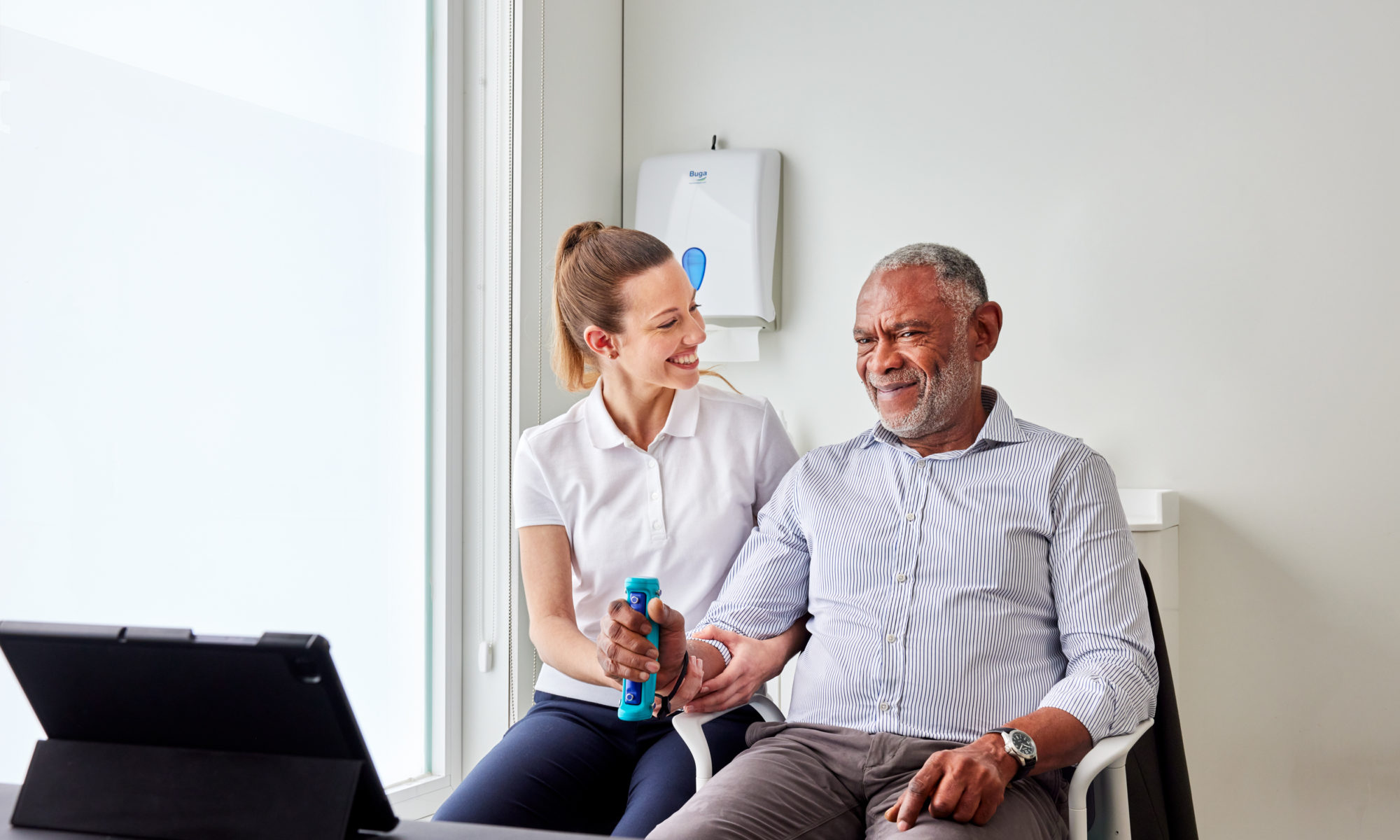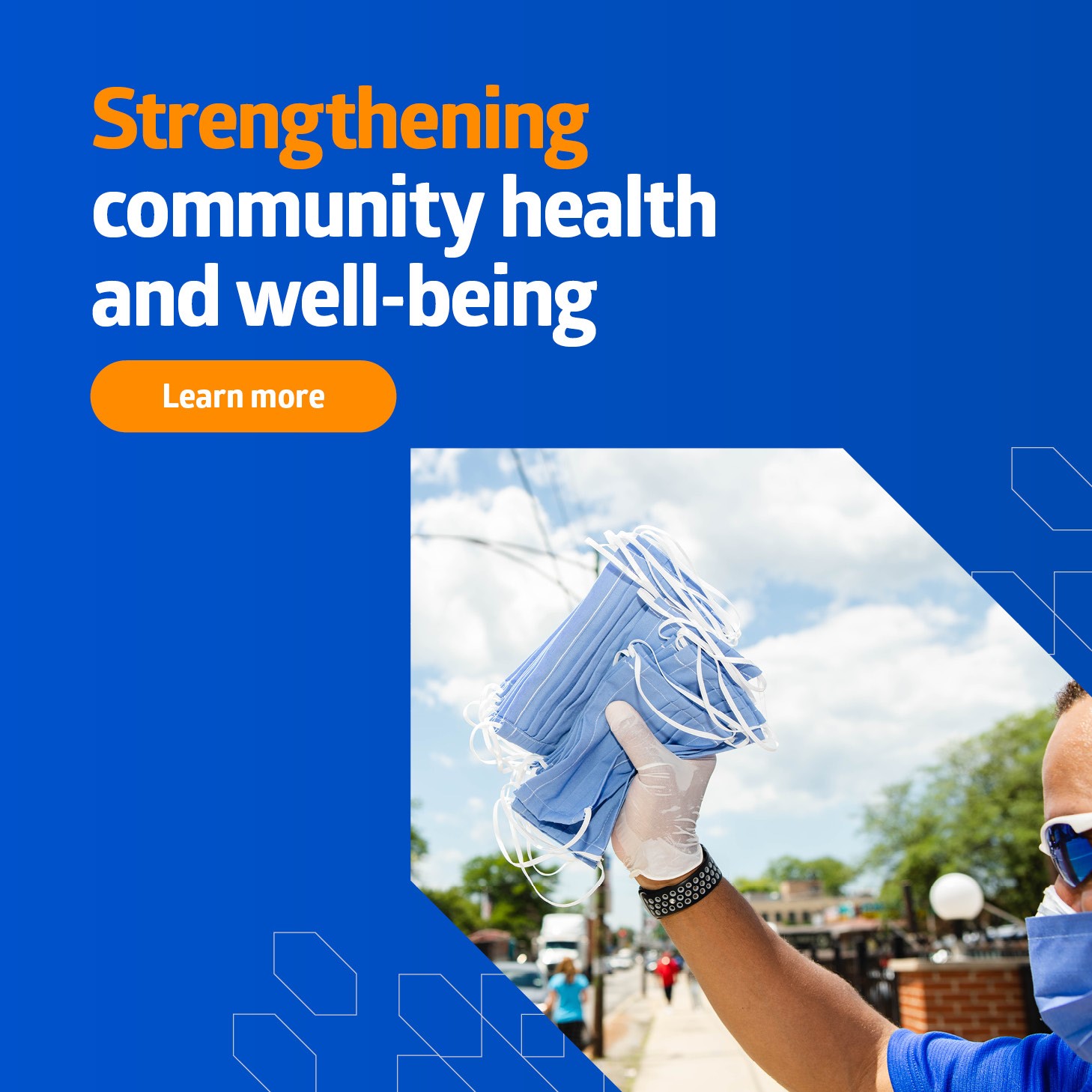Recent research connects grip strength to overall health driving new thinking on age-old issue

Upper extremity assessment and training innovates patient care in digital format
By Medline Newsroom Staff | April 28, 2022
Grip strength is becoming a stronger focus for healthcare providers due to a predictive link between grip strength and future function, bone mineral density, cardiovascular health, fractures, falls, disease status, cognition, mortality, and more.
Occupational and physical therapists have focused on grip strength as a way to improve patient outcomes and functional capability. In addition to being used as a predictive biomarker, improvements in grip strength and range of motion can help improve a patient’s independence in functional tasks as both men and women with poor grip strength present with two to three times more risk of problems with functional mobility and decreased independence with ADLs/IADLs.
“Grip strength is a valuable biomarker for older adults because of the association between grip strength and performance of functional activities that impact independence,” said Jessica Belanger, MsOT, senior clinical specialist at Medline Therapy and Rehab. “Several recent studies have also indicated that there is a relationship between grip strength and the incidence of fractures as well as malnutrition, which are a concern for older patient groups that face an increased risk of fragility.2”
Digitizing Hand Therapy:
One new resource available to therapists in improving patient outcomes is the GripAble Pro. Available exclusively in the U.S. through Medline and recently added to the company’s full line of hand therapy solutions, the GripAble Pro is a portable hand-held device that provides scalable assessment and treatment options for hand rehabilitation. Calibrated to each patient’s individual ability, the GripAble Pro can assess and treat the smallest of movements in grip strength and range of motion of the wrist and forearm.
“Providing patients with a progressive challenge accelerates patient performance and when combined with gamification, studies have shown a significant improvement in patient outcomes,” says Jaime Stoffer, DPT, director of clinical programs at Medline Therapy and Rehab. “While gamification engages patients and improves adherence, motivation, and real-time feedback, the platform’s ability to provide data combined with auditory, visual, and haptic cues day over day is a game-changer when it comes to patient engagement
Traditional therapy methods for hands can include the use of exercise putty, resistance sponges, pegboards, balls, and other manual tools that are unmotivating, challenging to track, and only allow for three-to-four types of resistance training, often resulting in inconsistent exercises. Such tools are often missing key elements such as reaction speed, motor control, and problem-solving and have limited ability to be calibrated to the individual patient’s abilities, often limiting treatment programs.
Traditional dynamometers used to assess hand strength require regular calibration and follow strict testing guidelines in order to be reliable. Recent studies have shown hand grip strength has weakened dramatically since 1985 but many continue to use the original normative data from 1985 to compare a patient’s grip strength to a healthy population. This combined with inconsistent positioning and instruction as well as not maintaining calibration of the device allow for multiple areas to introduce error into hand assessments.
GripAble Pro is an accurate and reliable grip strength dynamometer. It is highly sensitive and has the ability to capture a more robust range of grip strength including the lower end of force. Its digital tracking has the ability to show progression and is laying the groundwork to modernize normative data on grip strength. 3
The addition of gamification in therapy encourages patient engagement, repetition, motivation, and adherence to treatment programs. Introducing gamification is shown to increase patient motivation and engagement, divert a patient’s focus on pain or restrictions, and increase the length of treatment frequency and repetition leading to stronger outcomes.
“In my work as an occupational therapist, I noticed a gap between current treatment models and available resources that could help patients achieve better outcomes through greater personalization and real-time monitoring,” said Nicola Goldsmith, MSc SROT and clinical director at GripAble. “The GripAble Pro has enabled me to increase the science in my practice by capturing objective measurements of grip strength in person or remotely and improve patient adherence to treatment programs. We are very excited to bring this new device to occupational and physical therapists to help improve hand therapy globally.”
Learn more about Medline’s therapy and rehabilitation capabilities or to request a demo of GripAble Pro.
Medline Newsroom Staff
Medline Newsroom Staff
Medline's newsroom staff researches and reports on the latest news and trends in healthcare.

